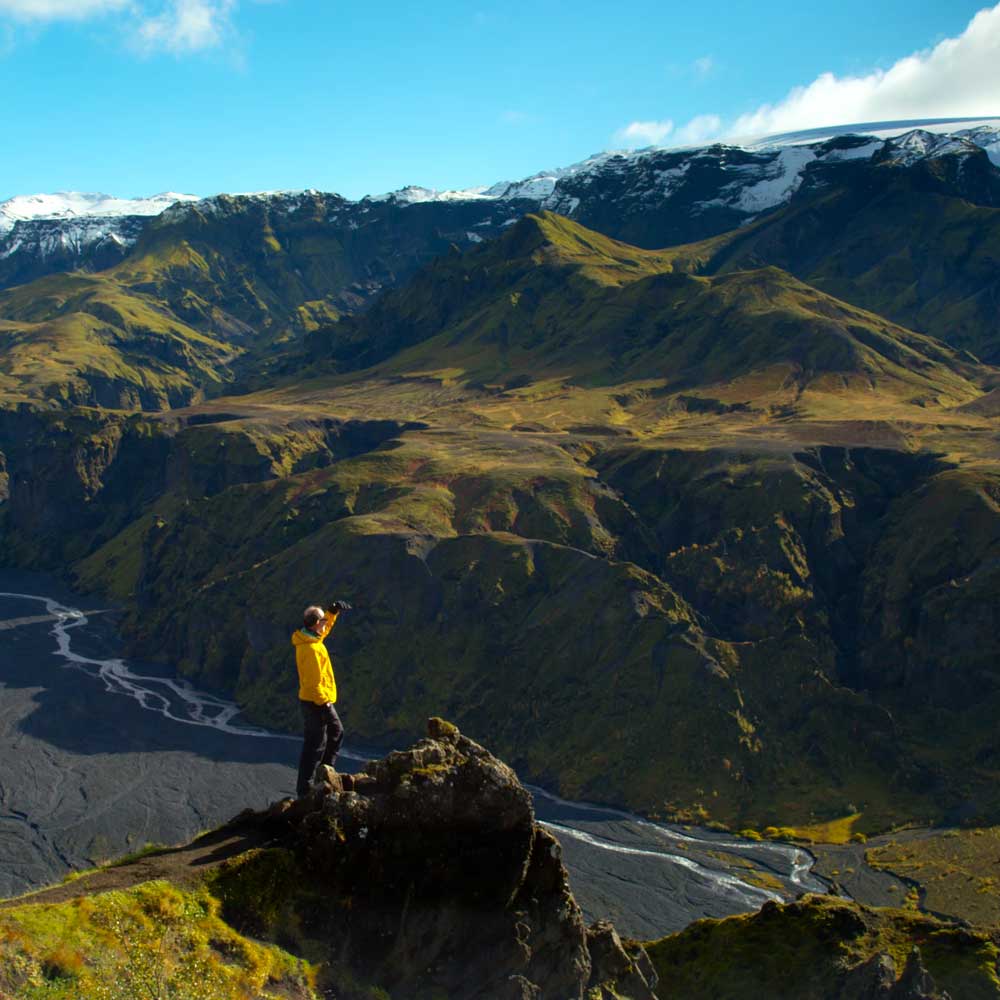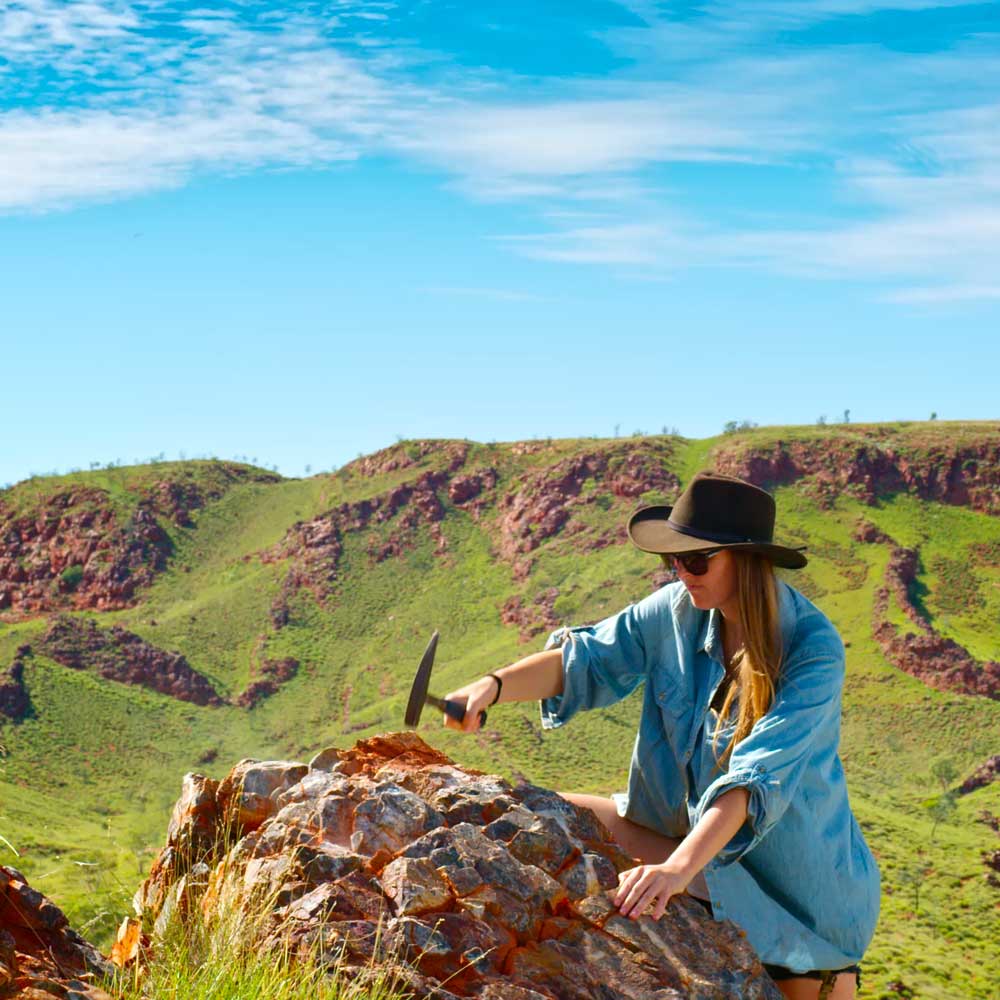
FINDING OUR GEOLOGISTS
“Casting is a vital moment in any film; the nature of the character can make or break a film regardless of the quality of the script. Giant screen documentaries come with their extra considerations – how to find characters that are authentically linked to the science story we’re telling."
In 2015 December Media knew they were making a giant screen film on the story of Earth. The unanswered question was: who would tell that story? When you’re covering a story as broad and involved as the Earth’s, it’s not immediately clear who is best to connect you with the heart of the tale.
The Earth’s story is a space story: a star bound planet, unique amongst trillions. Of course, it’s also natural history: a geological and biological marvel. We talked to countless scientists – astronomers, biologists, meteorologists, geologists finding out fascinating things about their science along the way (did you know it takes 1000 years to generate an inch of topsoil!?). Everyone we met was interesting, but none covered our whole story.
THEN WE MET MARTIN
Professor Martin Van Kranendonk is a man who’s living the dream. Quite literally. During his masters in Canada, he studied the Pilbara region of Western Australia and then and there, decided he wanted to go to the Gibb River and sleep under the stars. 35 years later he is still in Australia and an expert on the region. He is quick to smile and his laid back style is deceptive; he is regarded as one of the best field geologists in the world and is the head of the Biological, Earth and Environmental Sciences at the University of New South Wales, Australia.
Martin introduced Tara Djokic and they started telling their story. For a moment the team at December Media forgot they were making a film, simply enthralled by their incredible story.
Back when Tara was still a masters student, she was in the field with Martin, learning the trade and scouring the field area. Along the way she noticed a rock that seemed a little out of place; she struggled up a mini rise to get to it, collected it and took it back to the lab. And with that simple little rock, she has changed our understanding of the origin of life, forever. The fossils she discovered in these ancient hot spring deposits pushed back the earliest known evidence for microbial life on land by 580 million years!
We knew from the moment we heard their story that Martin and Tara were the characters for the film. They are dynamic, passionate scientists who traverse the world, going to the most astounding field areas, remote areas untouched by civilisation and as they are doing it, they are revealing the Earth’s history, changing our understanding of early life, challenging our search for life on mars, and just generally doing epic things!
Their research is focused around aspects of early Earth, biosignatures (molecular fossils), the habitats of earliest life, as well as the evolution of the planetary system through time. They are specifically also focused on the relationship between Earth’s earliest life and hydrothermal vent systems in the Pilbara region.
Through Martin and Tara, The Story of Earth blends epic moments in Earth’s history with cutting edge science, and lets you experience how these scientists changed our understanding of where and when life began”.


GEOLOGIST
MARTIN VAN KRANENDONK
Professor Martin Van Kranendonk is a geologist and astrobiologist known for his work in the field of Archean tectonics.
Martin was born in Canada and received his PhD in 1992 from Queens University in Kingston, Ontario. He joined the Geological Survey of Western Australia in 1997 and worked there until the start of 2012 when he accepted the position of Professor of Geology at the University of New South Wales.
Martin is the Director of the Australian Centre for Astrobiology, chair of the Precambrian Subcommission of the International Commission on Stratigraphy, and an associate editor of multiple journals (Precambrian Research, Geology, Astrobiology, and Episodes).
He has appeared on numerous television and radio documentaries on early Earth, and has been involved in educational outreach programs for school children and the general public.
GEOLOGIST
TARA DJOKIC
Tara Djokic is a PhD candidate at the Australian Centre for Astrobiology of the University of New South Wales (UNSW). Her research interests include astrobiology and science education.
Tara’s PhD work is focussed on the geological setting and ecology of some of Earth’s oldest evidence of life in the c. 3.5 Ga Dresser Formation in Western Australia.
Tara’s work has also led to the production of an online, virtual field trip based on observations from the Pilbara. The virtual field trip has been used in an online Astrobiology course at UNSW since 2016 to teach multidisciplinary science students about early life on Earth, geology and scientific practice.